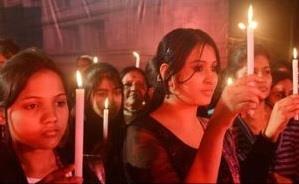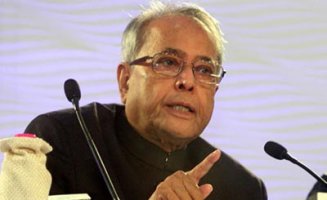March 7, 2013
Though some small steps have been taken for making women economically independent and gain social acceptance in society, they are still far way from "holding up half the sky"

March 7, 2013
Though some small steps have been taken for making women economically independent and gain social acceptance in society, they are still far way from "holding up half the sky"

Indian women might have broken through the glass ceiling on the political, professional and corporate fronts, and urban women especially have made remarkable progress and asserted their independence in many areas involving their career and personal choices, but the fact remains that insecurity haunts them on the streets, in offices, in their own homes or even in the mother's womb, activists say.
Women activists say that measured against the vastness of the country's billion-plus population, nearly half of them women, ground realities are really harsh and paint a grim picture of women and their status in society.
Despite the huge strides they have made in their careers, women make up just 25.6 per cent of the workforce in the organized sector, according to figures of the National Commission for Women (NCW).
As the Dec 16, 2012, gang-rape of a young woman in Delhi shows, women not only face harassment on the streets on a daily basis but are also victims of violent sexual assault at homes where brides are still set on fire and in offices where work harassments is a reality too.
According to women activist Sonali Khan status of women has changed over a period of time, but much more is needed. "The Indian woman today has achieved and advanced a lot be it professionally or socially owing to their strong will power. Be it any sector women are right up there and education has played a big role in that," Khan, who is vice president of Breakthrough, a global human rights organization.
"There are a lot of strong headed women today in our society and more women are coming out, determined to prove themselves. But it is also true that social evils and taboos still exist that hinders their progress," Khan said.
According to gender trainer and writer Kamla Bhasin, government's focus on women in the fiscal budget, and its women-friendly initiatives, has helped in improving their status in society.
"The good thing is that the whole concept of gender equality has been mainstreamed. In all our budgets now there is a provision of gender budgeting. There has been improvement in laws and legislations with respect to women also," Bhasin said.
They agree that some small steps have been taken for making women economically independent and gain social acceptance in society, but they are still far way from "holding up half the sky."
"The more things change, the more they remain the same. It is now time to think of not just the progress women have made but how they are still unsafe and unhappy," Akhila Sivadas, executive director of the Centre for Advocacy and Research (CFAR), said. CFAR works for women's rights and health.
Communist Party of India-Marxist (CPI-M) leader and Rajya Sabha MP Brinda Karat said recent economic policies have resulted in a "reverse status for women".
"Instead of giving women economic independence, they are being sent back inside their homes due to the rising violence against them," Karat, a vocal opposition leader who champions women's rights, said.
A staggering 228,650 incidents of crime against women were reported in the country during 2011 compared to 213,585 incidents in 2010, an increase of 7.1 per cent, National Crime Records Bureau (NCRB) data shows.
Both rape and dowry deaths have seen substantial increase in 2011 as compared to 2010, NCRB figures show.
According to Annie Raja of the National Federation of Indian Women, the pressure on today's women has increased and they face tough times.
"The pressure on women has actually increased. Women are forced to look for jobs. It is a very tough time for a woman. She has to fight against patriarchy as well as the neo-liberal economy," Raja said.
Experts say a woman's struggle begins right from the moment when she is inside the womb. And the battle continues. From her health, education and then a job – a woman never has a say.
The first battle starts from the womb. Sex selective abortions are common and can be seen even in affluent families.
The preference for a son has continued with rising economic development, said Kavita Krishnan, secretary of the All India Progressive Women's Association.
Though the sex-ratio at the national level has improved by seven points from 933 females per 1,000 males in 2001 to 940 females in 2012, the situation has not improved at the micro-level, she added.
In the bottom 10 districts belonging to the northern states of Haryana and Punjab, the sex-ratio was as low as 766 to 1000 in Fatehgarh Sahib.
This skewed ratio also means girls don't get a chance to study. While only 2.4 per cent girls are not studying at the primary level (7-10 years age-group), it increased as they grew up to rise to 17.9 per cent at the secondary and higher secondary level.
Women's health, in fact, is one of the worst indicators of how Indian society treats them, experts said.
India's Maternal Mortality Rate (MMR) is 212 per 100,000 live births, whereas the country`s Millenium Development Goal in this respect is 109 per 100,000 live births by 2015. Former police officer and activist Kiran Bedi, who was the first woman to join the Indian police force in 1972, sums it up: "Though there has been a substantial improvement in the status of women in India, much needs to be done."
Courtesy: IANS















































































































